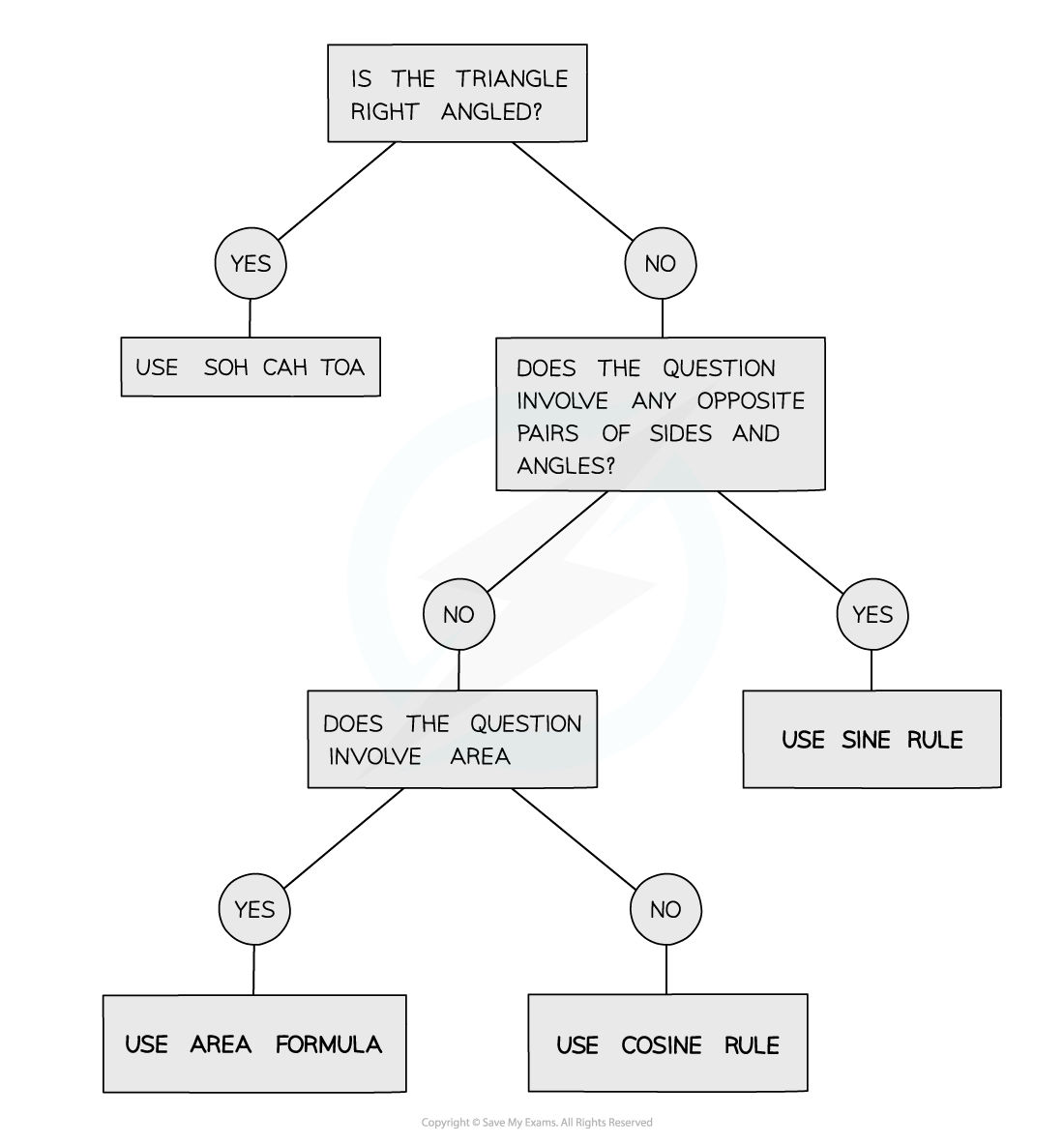Deciding the Trig Rule (Cambridge (CIE) IGCSE Maths): Revision Note
Exam code: 0580 & 0980
Applications of trigonometry
How do I decide which trig rule to use?
Different rules are required depending on the question
You need to be able to decide which is appropriate to use
Think about what information you have and what you want to find
This table summarises the possibilities:
If you know | And you want to know | Use |
|---|---|---|
Two sides and an angle opposite one of the sides | The angle opposite the other side | Sine rule |
Two angles and a side opposite one of the angles | The side opposite the other angle | Sine rule |
Two sides and the angle between them | The third side | Cosine rule |
All three sides | Any angle | Cosine rule |
Two sides and the angle between them | The area of the triangle | Area of a triangle rule |

Can I use multiple trig rules in the same question?
Harder questions will require you to use more than one trig rule
For example, you may need the sine rule followed by the cosine rule
The area formula only works for an angle between two sides
If you are not given this setup, you may need to use the sine or cosine rule first
If it looks like no rule would work, remember that all angles in a triangle sum to 180
This often helps to find a missing angle
Examiner Tips and Tricks
Look at the number of marks for a question - if it is a lot, you are likely to need more than one trig rule!
Worked Example
Find the area of the triangle below.

Answer:
The area of a triangle can be found using the formula
The three side lengths are known , but we need to find an angle in order to calculate the area
Because we know all three sides, any of the angles could be found
Find angle ABC using the cosine rule
Cosine Rule: ,
where is the angle opposite side
Rearrange to make the subject
Use your calculator to find the value of
Use the cos-1 button on your calculator to find the value of
Now we can find the area of the triangle using the formula and angle ABC as the known angle
(3.s.f)

Unlock more, it's free!
Did this page help you?